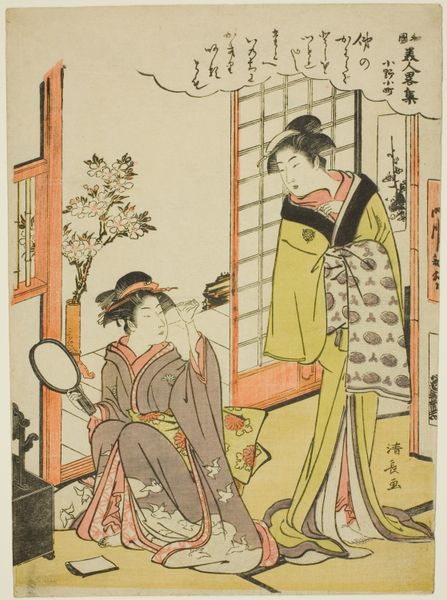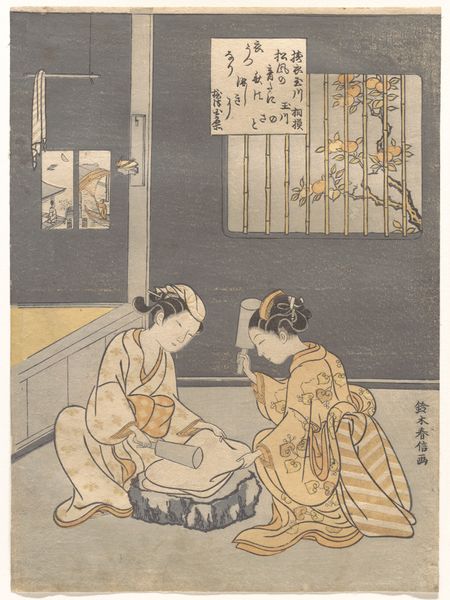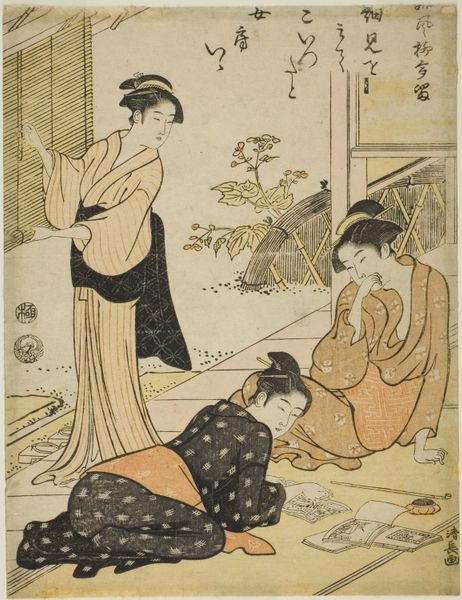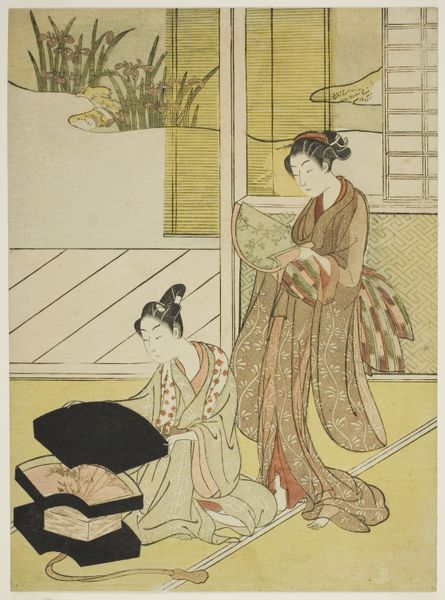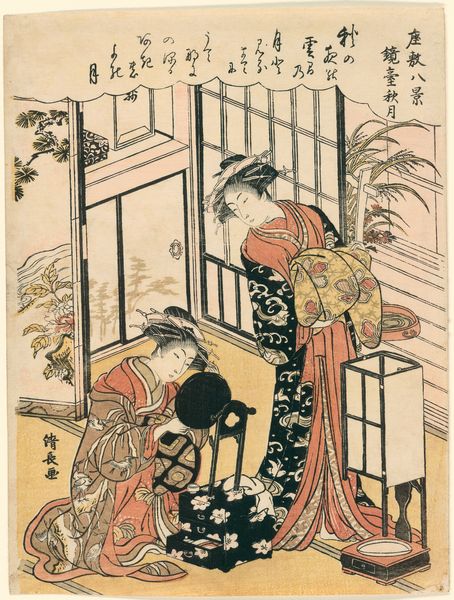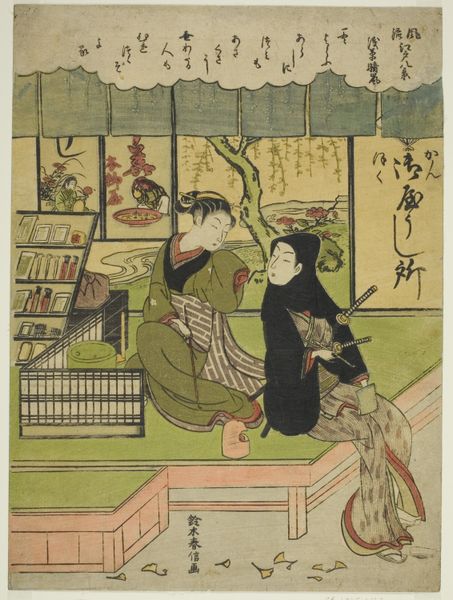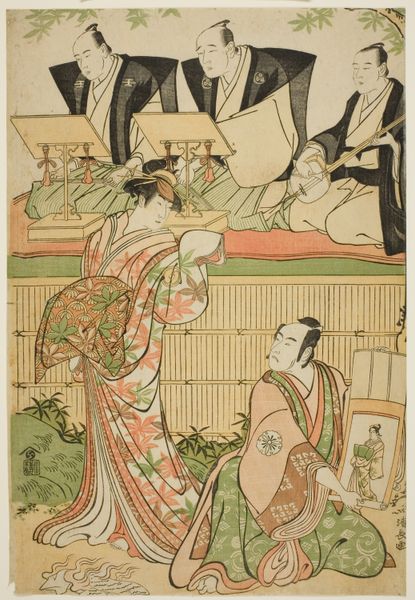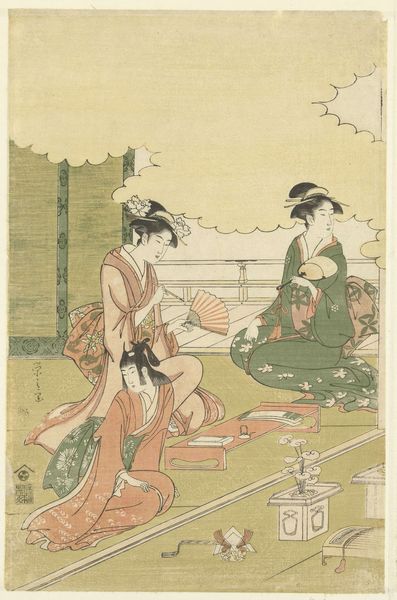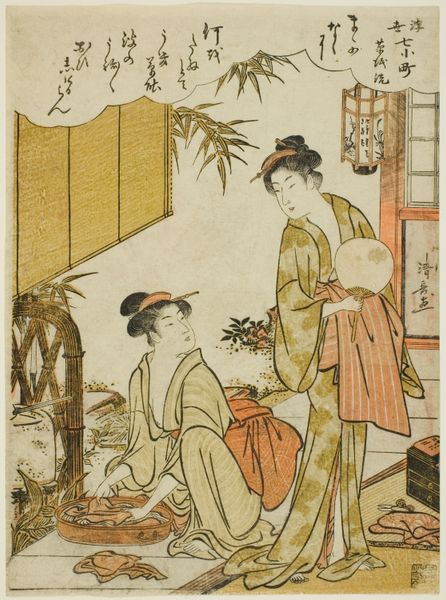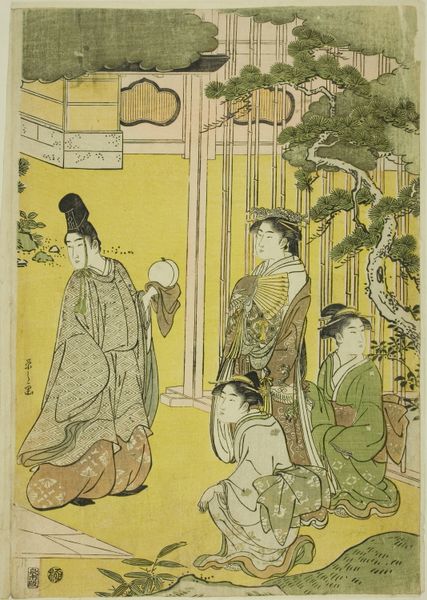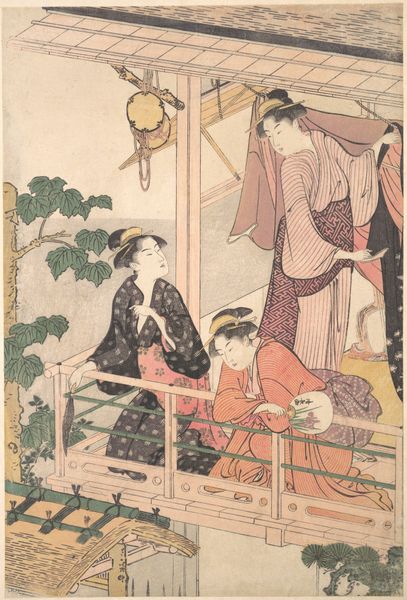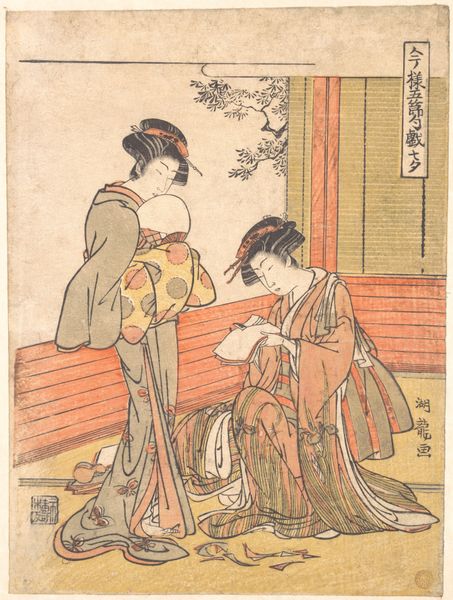
Sumirena: The Mistress of Yojiya (Yojiya musume, Sumirena), from the series "Beauties of the Floating World Compared to Flowers (Ukiyo bijin hana ni yosu)" c. 1768 - 1769
0:00
0:00
print, woodblock-print
#
portrait
# print
#
asian-art
#
ukiyo-e
#
japan
#
figuration
#
woodblock-print
#
genre-painting
Dimensions: 27.6 × 20.9 cm (10 7/8 × 8 1/4 in.)
Copyright: Public Domain
Editor: This lovely woodblock print, created around 1768-1769 by Suzuki Harunobu, is titled "Sumirena: The Mistress of Yojiya," from the series "Beauties of the Floating World Compared to Flowers." There’s such an intimate feeling about it. What aspects of this work stand out to you? Curator: I’m particularly interested in how Harunobu uses the woodblock medium itself to portray these women. The layered printmaking process inherently speaks to the layering of identities and roles that women, especially those in the pleasure quarters, had to perform. Think about the labor involved, the materials sourced, the socio-economic forces that underpinned the entire ukiyo-e industry. Editor: That's a compelling point. I hadn’t considered the materiality itself as a commentary. Does the fact that it is a print, making it more accessible and reproducible, also have implications for its social context? Curator: Precisely! The mass production of these prints allowed for a wider circulation of these images. This created a consumer culture where even those who might not have direct access to the pleasure quarters could consume idealized versions of feminine beauty and fashion, reflecting both aspirations and limitations within Edo society. Look at the attention given to the kimonos, for example. Editor: So, the choices of materials and the means of production are integral to understanding the social and cultural message of the work? Curator: Exactly. Harunobu's prints, with their focus on the ephemeral pleasures of the "floating world," are inextricably linked to the economic and social conditions that enabled their creation and consumption. What do you think of that economic tie to the Geisha districts and class tensions it might provoke? Editor: It deepens my understanding considerably! Considering the printmaking process itself as a reflection of the lives of these women – both created and consumed as commodities – is a fascinating insight. Curator: Glad you found it useful. It’s always worthwhile considering the art production process.
Comments
No comments
Be the first to comment and join the conversation on the ultimate creative platform.
